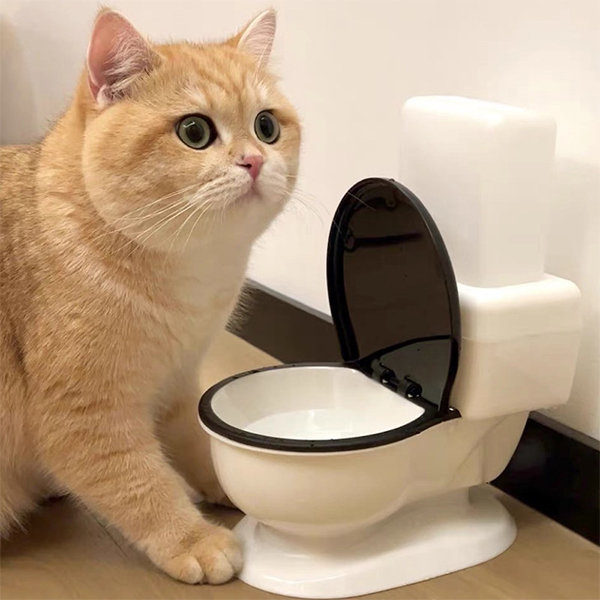What're your opinions with regards to Can You Flush Cat Poop Down The Toilet??

Intro
As cat proprietors, it's vital to be mindful of how we dispose of our feline close friends' waste. While it may seem hassle-free to purge feline poop down the bathroom, this technique can have damaging effects for both the setting and human wellness.
Ecological Impact
Flushing pet cat poop introduces unsafe pathogens and parasites right into the water, posing a considerable danger to water ecological communities. These contaminants can negatively impact marine life and compromise water quality.
Health Risks
Along with ecological problems, purging pet cat waste can likewise present health and wellness risks to humans. Pet cat feces might consist of Toxoplasma gondii, a parasite that can cause toxoplasmosis-- a possibly serious disease, especially for expecting ladies and individuals with weakened immune systems.
Alternatives to Flushing
Fortunately, there are more secure and extra accountable methods to deal with cat poop. Take into consideration the adhering to options:
1. Scoop and Dispose in Trash
The most usual technique of dealing with pet cat poop is to scoop it right into a biodegradable bag and toss it in the trash. Make certain to utilize a dedicated trash inside story and throw away the waste promptly.
2. Usage Biodegradable Litter
Opt for naturally degradable cat trash made from products such as corn or wheat. These litters are environmentally friendly and can be securely dealt with in the garbage.
3. Hide in the Yard
If you have a yard, think about hiding pet cat waste in a designated area away from veggie yards and water resources. Make certain to dig deep enough to stop contamination of groundwater.
4. Set Up a Pet Waste Disposal System
Buy an animal garbage disposal system particularly made for pet cat waste. These systems make use of enzymes to break down the waste, minimizing smell and environmental effect.
Final thought
Liable pet ownership prolongs past giving food and sanctuary-- it also involves proper waste management. By refraining from flushing cat poop down the toilet and choosing alternate disposal techniques, we can reduce our environmental footprint and protect human wellness.
Why Can’t I Flush Cat Poop?
It Spreads a Parasite
Cats are frequently infected with a parasite called toxoplasma gondii. The parasite causes an infection called toxoplasmosis. It is usually harmless to cats. The parasite only uses cat poop as a host for its eggs. Otherwise, the cat’s immune system usually keeps the infection at low enough levels to maintain its own health. But it does not stop the develop of eggs. These eggs are tiny and surprisingly tough. They may survive for a year before they begin to grow. But that’s the problem.
Our wastewater system is not designed to deal with toxoplasmosis eggs. Instead, most eggs will flush from your toilet into sewers and wastewater management plants. After the sewage is treated for many other harmful things in it, it is typically released into local rivers, lakes, or oceans. Here, the toxoplasmosis eggs can find new hosts, including starfish, crabs, otters, and many other wildlife. For many, this is a significant risk to their health. Toxoplasmosis can also end up infecting water sources that are important for agriculture, which means our deer, pigs, and sheep can get infected too.
Is There Risk to Humans?
There can be a risk to human life from flushing cat poop down the toilet. If you do so, the parasites from your cat’s poop can end up in shellfish, game animals, or livestock. If this meat is then served raw or undercooked, the people who eat it can get sick.
In fact, according to the CDC, 40 million people in the United States are infected with toxoplasma gondii. They get it from exposure to infected seafood, or from some kind of cat poop contamination, like drinking from a stream that is contaminated or touching anything that has come into contact with cat poop. That includes just cleaning a cat litter box.
Most people who get infected with these parasites will not develop any symptoms. However, for pregnant women or for those with compromised immune systems, the parasite can cause severe health problems.
How to Handle Cat Poop
The best way to handle cat poop is actually to clean the box more often. The eggs that the parasite sheds will not become active until one to five days after the cat poops. That means that if you clean daily, you’re much less likely to come into direct contact with infectious eggs.
That said, always dispose of cat poop in the garbage and not down the toilet. Wash your hands before and after you clean the litter box, and bring the bag of poop right outside to your garbage bins.
https://trenchlesssolutionsusa.com/why-cant-i-flush-cat-poop/

As an enthusiastic person who reads on How to Dispose of Cat Poop and Litter Without Plastic Bags, I think sharing that editorial was a good thing. If you please take a moment to promote this post if you enjoyed reading it. Kudos for your time. Kindly stop by our website back soon.
Website